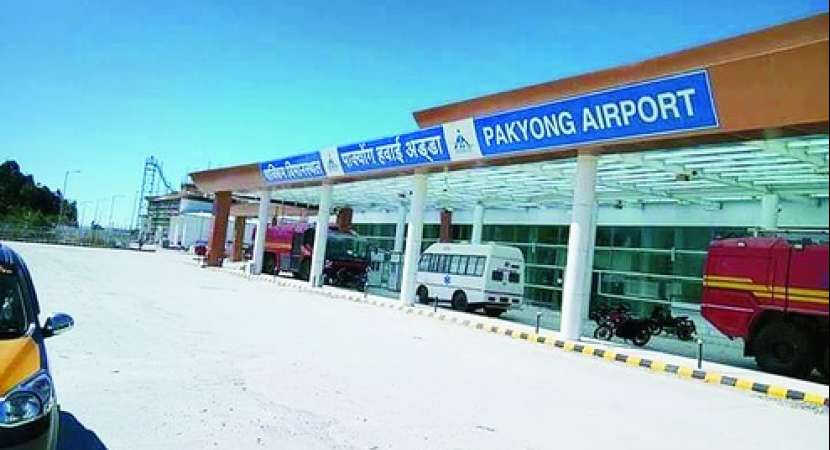Recently, PM Modi inaugurated Pakyong Airport in East Sikkim district, which will connect the Himalayan state to rest of the world through air connectivity. This is the first airport in Sikkim, the state did not had an airport despite the fact that it was admitted to the Union of India back in 1975. The airport built at a cost of Rs. 350 crores at an altitude of about 4,700 feet is located at a distance of 30 km from the state capital of Gangtok. Sikkim was the only state in the country to not have an airport and therefore potential of tourism sector was not fully utilised.
The Sikkim airport is the 100th operational airport in the country. Out of 100, 35 became operational under last four years of the Modi government. This shows a huge success of the government in the aviation sector. 15 of the total 100 airports were started during Atal Bihari Vajpayee’s prime ministership. Therefore 50 airports out of 100 became operational in the 10 years of the NDA rule. On the other hand, Congress government could not even start 50 airports in its more than 50 years rule, some major airports in metropolitan cities must have been built during the British era. This is a proof of utter negligence of infrastructure during the Congress era. The party never wanted the air travel to be medium of transport for common middle class people. Being true to its elitist nature, it kept air travel reserved for upper class of the society.
Sikkim airport was built under much talked Udega Desh Ka Aam Nagrik (UDAN) scheme which aims to provide and boost regional air connectivity. UDAN scheme is a part of the National Civil Aviation Policy (NCAP) which was released on June 15, 2016. The Regional Connectivity Scheme (RCS) launched in April 2017 aims to make air travel affordable and increased the connectivity in tier two and tier three cities of the country. As many as 43 cities are expected to get regular connectivity under this new scheme and a dozen airports where limited but irregular flights operation will be connected. 31 destinations which were not connected earlier despite having airports will now become active. The government gives various concessions to airlines having flights to smaller cities under this new scheme, therefore, places such as Shillong, Shimla, Bhatinda, Ludhiana, Bhuntar, Pathankot, Mysore and Salem among others, saw a good number of passenger traffic movement in April as opposed to the corresponding period last year. Indian airlines carried more than 12 crore passengers in the fiscal year 2017-18 against 6.1 crore passengers in the fiscal year of 2013-14. The compound annual growth rate (CAGR) in the number of passengers is a whopping 19 percent. There was a rise of 18.1% over the corresponding month from the previous year. Growth in international and domestic air traffic in India for the month of April 2018 was 5.8% and 21.1% respectively.
In an attempt to make air tickets more affordable, the airfare for a 1-hour journey of approximately 500 km on a fixed-wing aircraft or for a 30-minute journey on a helicopter would be capped at Rs. 2,500. Under the scheme, government aims to connect 70 airports, of which 31 are currently un-served, 12 are underserved, and 27 are being served. Western Indian will get most under this scheme, 24 of the airports taken under UDAN are in Western India, 17 in North India, 11 in South India, 12 in East India and 6 in Northeastern part of the country.
